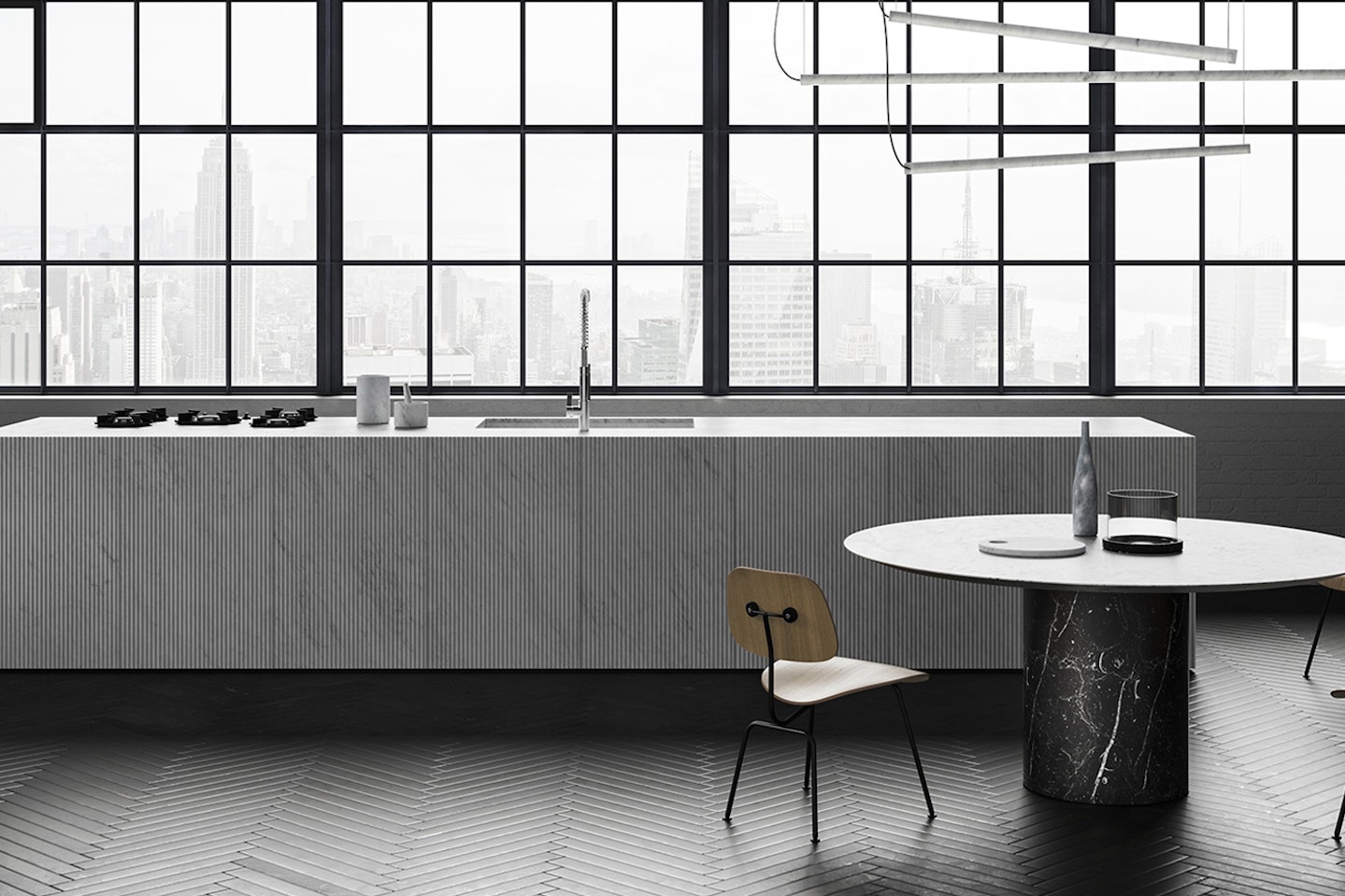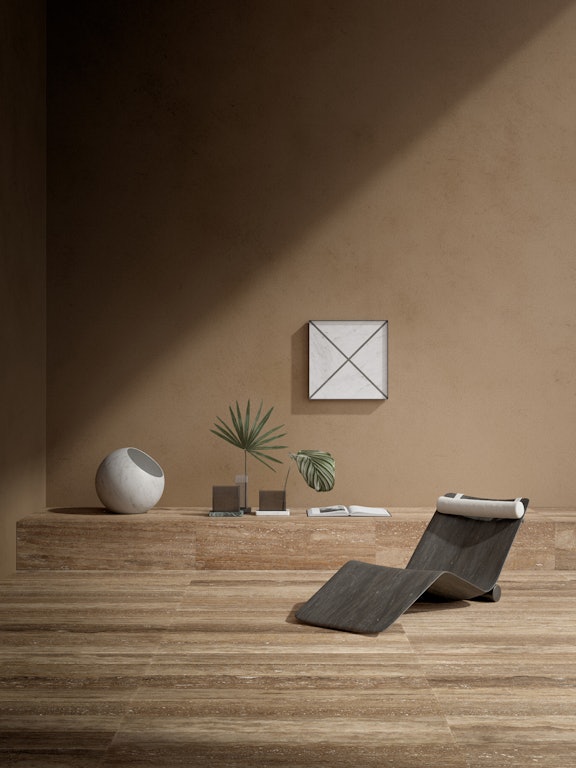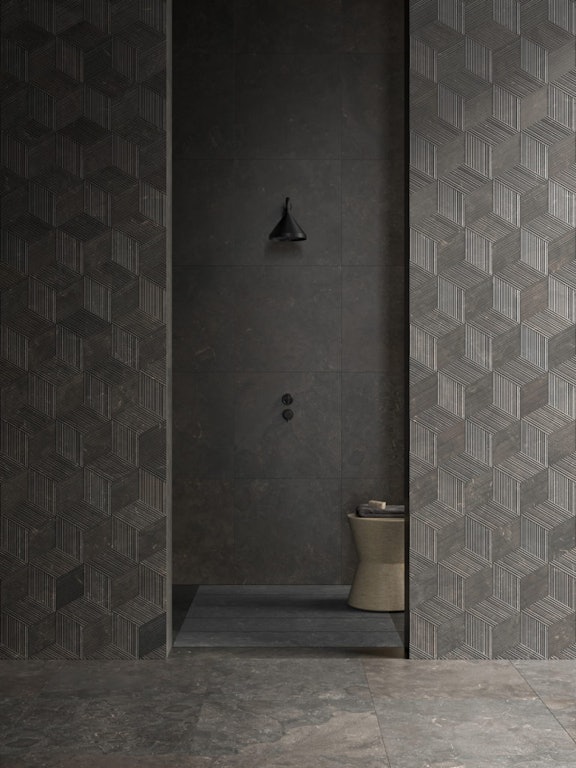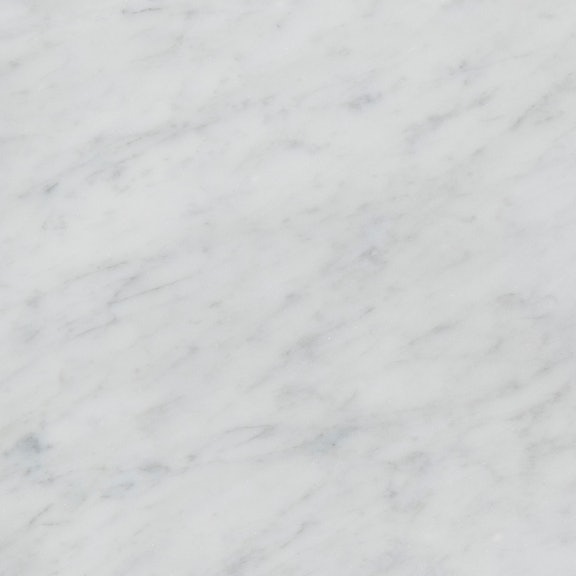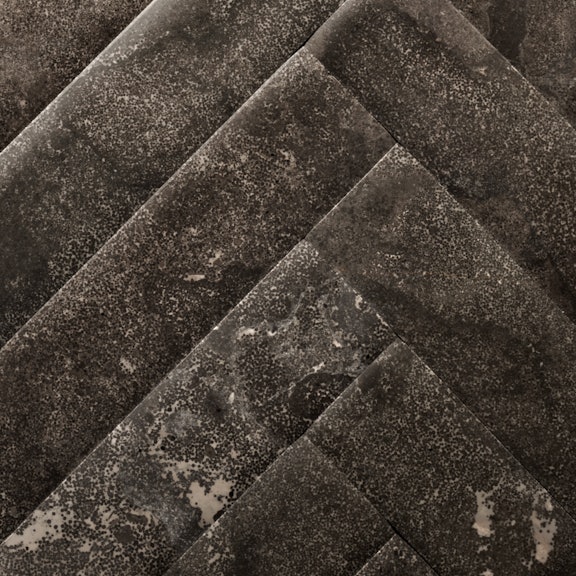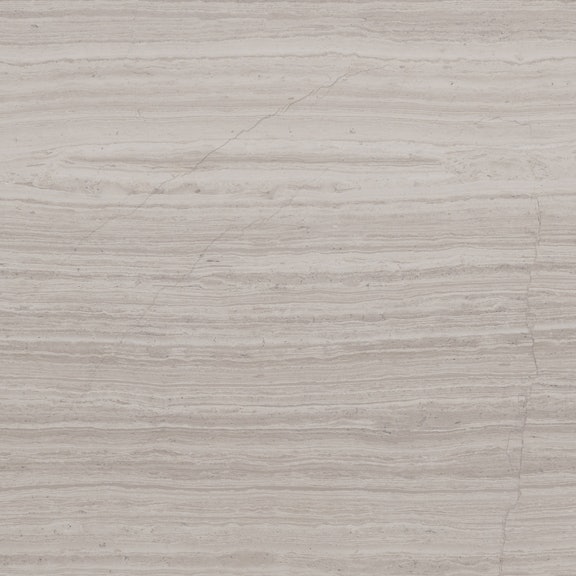How to clean natural stone floors
03.2022
Natural stone floors are a gorgeous element in a home, but how do you look after them? The good news is that it’s easier than you think
How to clean natural stone floors
Adding charm and authenticity to any space, natural stone is one of the most prized materials of all. To ensure it maintains its beauty through the decades, or even centuries, it is important to know how to clean a stone or marble floor and which products to use and those to avoid with a capital A.
The extraordinary colours, veining and variations that make this material so special and unique have seen it used throughout history for grand works of art, buildings and monuments, many of which still stand today in all their glory.
You might say that if it was good enough for great architects and sculptors of the past, it is certainly good enough to use on your floor and in fact, stone will always lift the aesthetic of a space and add a certain X factor. It therefore deserves some TLC or Tender Love Care, but that doesn’t have to mean spending hours cleaning, rather simply understanding how to look after it, removing potential stains promptly and ensuring it maintains its wonderful natural luminosity.
If you, like us, adore this wonderful material gifted to us by nature, we hope you will find this guide to looking after it useful.

The advantages of natural stone flooring
When you choose a stone floor for a room, you are not only making an elegant décor statement, but also a smart choice. Natural stone is an uncommon material in every sense. It starts life high in the mountains, and makes a long, arduous trip to its final home, via painstaking and complex extraction and cutting processes. The fact that it is not easily accessible, coupled with it not being an infinite resource makes it all the more precious, and is the reason many see it as a special material to be used on floors in rooms where you want to create something a little out of the ordinary. That said, however, its hardwearing properties also make it ideal for zones subject to high traffic. Again, however, it just needs to be looked after!
Its incredible advantages include:
- aesthetics;
- variety;
- toughness and durability.

What makes it so visually captivating is its luminosity, the unique veining and patterns and its extraordinary colours. Whether used in a home, an office, store or hospitality venue, it is simply striking, even in its most subtle or neutral hues.
In tones of palest grey, classic white or black, a natural floor lends solemnity to spaces, but in cream, soft pink, red or brown, it warms up the atmosphere with unusual, intriguing colours that no other material can completely replicate.
Something so precious and beautiful, of course deserves to be taken good care of, and the good news is that it is actually surprisingly easy to look after. In short, you need to use the right products on it and avoid the wrong ones, as harsh cleaners can cause damage.
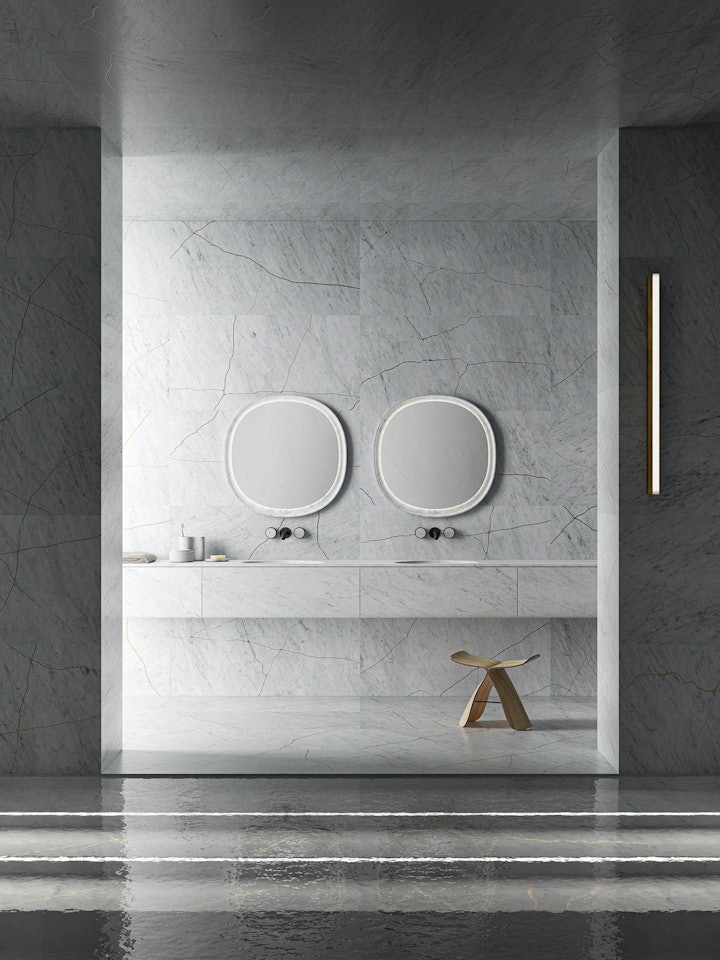
Products and advice for cleaning natural stone
Keeping stone clean and avoiding etching are the two main ways to ensure it retains its original splendour, and the best way to do this is to clean regularly (just as you would with any type of material) and with natural or non-aggressive products.
A quick word about etching, if you are not familiar with the term. This is when stone loses its lustre and you end up with dull patches, and is generally caused by acidic substances or alcohol coming into contact with it. These can include wine, lemon, vinegar and cleaning products containing ammonia or bleach and, definitely no pure alcohol or nail polish remover should ever be used on it!
This means that you should avoid any acidic detergents, whether we are talking about everyday cleaning or removing stains. Any substance with a pH above 7 is an absolute no-go, as are anti-limescale products or even those traditional homemade remedies using vinegar, lemon juice and the like.
To err on the safe side, and avoid any risk of ruining your gorgeous natural stone, it is always advisable to use tried and trusted cleaning products. There are many on the market, but we can confidently recommend the Fila range, a brand that for many years has developed specific products for every necessity, from cleaning a just-laid stone floor to degreasing to providing protection from water and oil. Such products clean stone delicately, degrease without causing corrosion and do not leave marks.
If you follow our advice and that of your tile layer or supplier, you will continue to enjoy your beautiful natural stone floor for years to come.
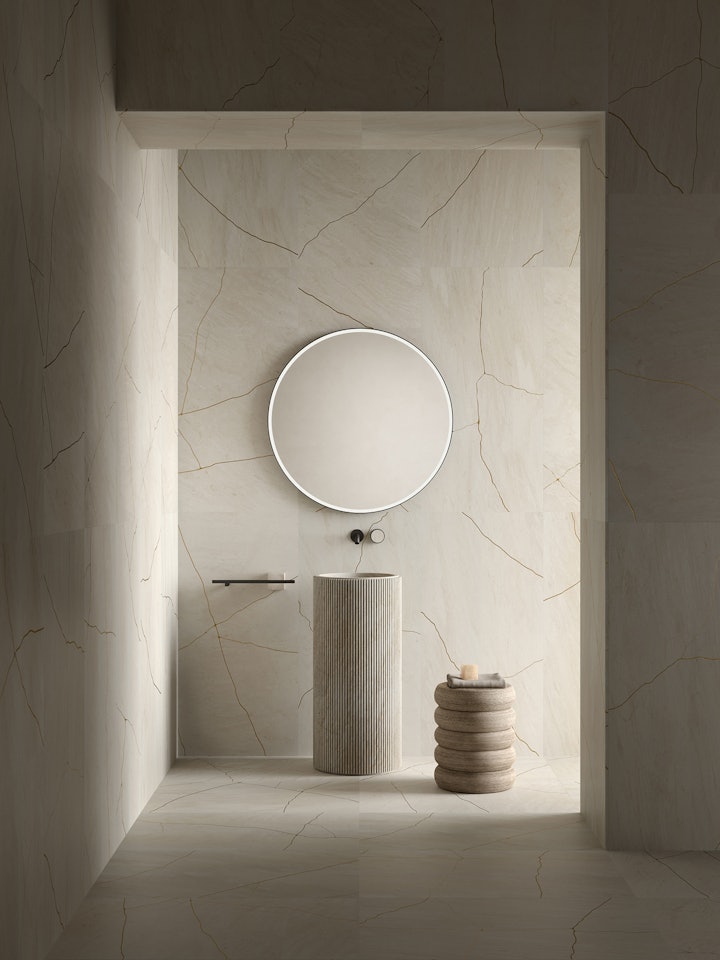
The 3 rules of cleaning a stone floor
When it comes to everyday cleaning, there are three main rules:
- Avoid products that can damage the stone
- Clean regularly
- Use the correct cleaning technique so you don’t leave residue stains
We have already touched on the need to avoid harsh or acidic cleaning products, so what should you use? As we mentioned above, we tend to use the Fila range, which is available in most markets and is tried and tested. You can also use a pH-neutral detergent or washing-up liquid and there are many eco-friendly variants available.
On our stone, we use Fila Cleaner Pro for everyday cleaning. As with any material, when you clean regularly, the procedure becomes much easier. The problems arise when substances have the chance to sink into the stone and develop into stains, or when they become ingrained or encrusted, and hard to remove. Just as cleaning your teeth properly every day helps prevent cavities, passing a mop over your floor regularly prevents unsightly, stubborn blemishes that end up requiring major intervention.
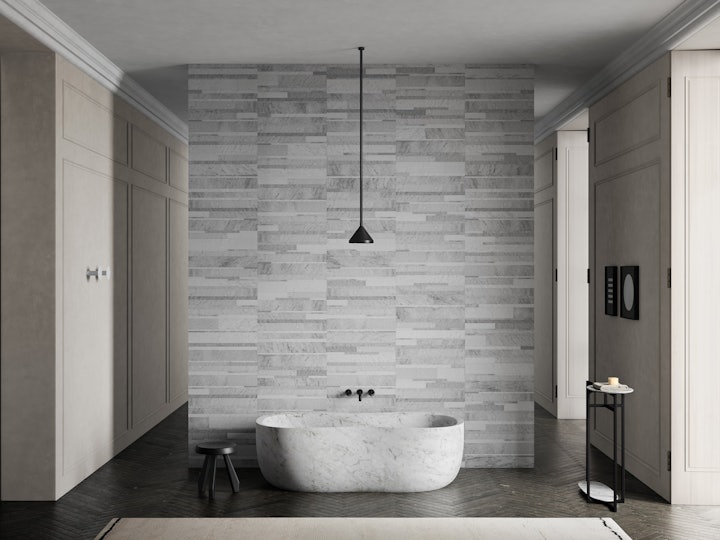
That’s also why it is important to wipe up spills of substances such as wine, coffee or lemon as quickly as possible before they seep into the stone and stain.
Dilute the Cleaner Pro using a ratio of 1:200, equivalent to 25 ml to 5 litres of water, and apply with a mop. A good practice is to use two buckets, squeezing the dirty water into one as you go. With this weak concentration you should not need to rinse the floor afterwards because the Cleaner Pro and water solution will not leave any residue. Make sure, however, your squeeze as much water out of your mop as possible, especially if you live somewhere with ‘hard’ water.
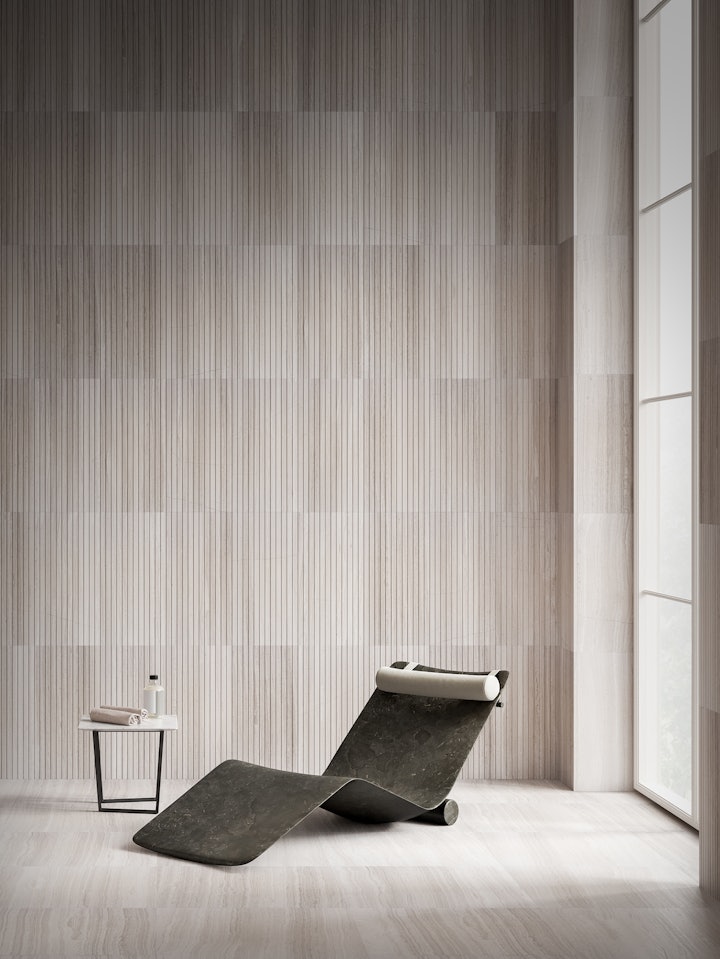
How to remove stubborn dirt
To clean particularly stubborn marks from a stone floor, you need a specific product and the one we have found most effective is Fila PS87 PRO for almost every type of natural stone.
Dilute in water at a ratio of between 1:10 and 1:20 and apply to the stain. Leave it for 4-5 minutes then pass a mop over it to remove the soapy water and any residue and rinse thoroughly.
For Pietra d’Avola limestone, however, we use Fila Cleaner Pro, the same product we use for all stones for everyday cleaning. To remove ingrained dirt, we increase the concentration of product to around 1: 30-50, equivalent to around 125 – 200 ml per 5 litres of water, depending on just how dirty it is. In this case, use a mop to pass it over the surface, then remove any dirt and mop again, this time with clean water. then wipe off any dirt and rinse it thoroughly with clean water.
There is nothing worse than expending energy to wash your floors then realise one day that there are strange streaks or rings that have been caused by your efforts, so removing the residue is a crucial step.
Natural stone floors add a definite wow factor to any space and are also versatile, hardwearing and enduring. That said, however, they do require a little TLC to ensure they remain as gorgeous tomorrow as when they were first laid, and like any material, this means regular cleaning and using the right products.
We have been working with stone for more than half a century and over the years have constantly sought out the best techniques and products for looking after this beautiful natural material. If you have any questions about caring for your stone, please get in touch, or simply enjoy looking at inspiring images of beautiful interiors with floors – and more – in natural stone.
